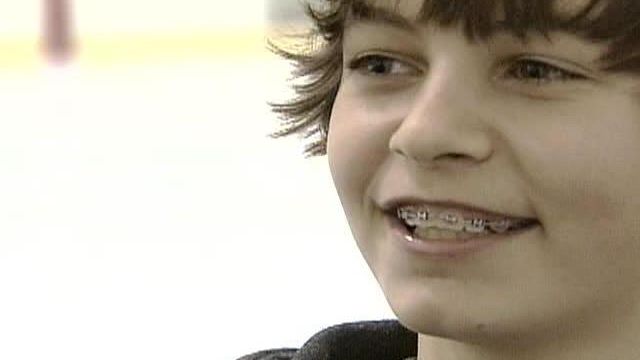Local News
Study Gathering Data on Hard Hits to Young Heads
Researchers have put wired helmets on young hockey players to collect information about head injuries that can cause concussions and pose health problems.
Posted — UpdatedWAKE FOREST, N.C. — Researchers from UNC Chapel Hill are looking into the impacts that young athletes may suffer when the hits they take in high-impact sports are to the head, causing concussions.
Hockey is one of those high-impact sports.
Thayer Universal plays in a youth league. He says a big part of the game is “hitting, hitting people.”
That works both ways, however, and it was a severe hit that landed Universal, No. 11, in the hospital with a concussion.
“I just turned around and he hit me from behind, and the last thing I remember is waking up in the hotel” before the game where it happened.
Researchers say the hit on Universal was equivalent to running into a brick wall at 35 mph.
The hits that Universal and other players take are the reason Jason P. Mihalik and his colleagues from UNC Chapel Hill go to the games. Mihalik is a doctoral student at UNC’s School of Medicine and a teaching assistant in the Department of Exercise and Sport Science.
They've outfitted the players with specialized helmets.
“In each of the helmets, we've got six sensors,” Mihalik explained.
The sensors measure the severity and location of the impact on the head. The data is downloaded to a computer system set up near the ice.
Bill Fredenburg, the coach of Universal’s team, said the information is invaluable.
“I need to figure out how the kids are going to react to it and how to keep them out of that sort of danger,” Fredenburg said.
Researchers say very little is known about this young population of athletes at risk for head injuries.
“If they get concussions at a young age and that injury isn't managed or isn't recognized, there could be some serious long-term effects for these athletes,” Mihalik said.
The data could lead to more impact-resistant equipment for the players and provide information that league officials might use to change rules to make the game safer for athletes.
A study similar to Mihalik’s is being conducted on young athletes in Toronto
• Credits
Copyright 2024 by Capitol Broadcasting Company. All rights reserved. This material may not be published, broadcast, rewritten or redistributed.





